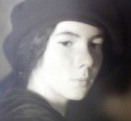Barbara Newhall Follett facts for kids
Quick facts for kids
Barbara Newhall Follett
|
|
|---|---|
 |
|
| Born | March 4, 1914 Hanover, New Hampshire, U.S.
|
| Disappeared | December 7, 1939 (aged 25) Brookline, Massachusetts, U.S. |
| Status | Missing for 86 years and 7 days |
| Nationality | American |
| Other names | Barbara Rogers |
| Occupation | Novelist |
|
Notable work
|
The House Without Windows (1927) The Voyage of the Norman D. (1928) |
| Spouse(s) |
Nickerson Rogers
(m. 1933–1939) |
| Parent(s) | Wilson Follett Helen Follett |
Barbara Newhall Follett (born March 4, 1914) was an American child prodigy and novelist. She became famous when her first novel, The House Without Windows, was published in January 1927. At that time, she was only twelve years old. Her next book, The Voyage of the Norman D., also received great reviews when she was fourteen.
In December 1939, when she was 25, Barbara Follett left her home. She was never seen again after that day. Her disappearance remains a mystery.
Contents
Who Was Barbara Follett?
Barbara Newhall Follett was born in Hanover, New Hampshire, on March 4, 1914. Her father, Wilson Follett, was a literary editor and university teacher. Her mother, Helen Thomas Follett, wrote books for children.
Barbara had an older half-sister named Grace. She also had a younger sister, Sabra Follett. Sabra later became the first woman to be accepted as a graduate student at Princeton University in 1961.
Early Life and Talents
Barbara was schooled at home by her mother. She showed a talent for reading and writing from a very young age. By the time she was four, she was already writing her own poems.
Barbara was a very imaginative and smart child. When she was seven, she started writing about her own imaginary world called Farksolia. She even created its own language, Farksoo. Barbara loved nature, and her stories and poems often featured the natural world and the wilderness.
A Young Author's Success
In 1923, when Barbara was only eight years old, she started writing a story. It was meant to be a birthday gift for her mother. She used a small portable typewriter she had received. The story was first called The Adventures of Eepersip, but later became The House Without Windows.
The House Without Windows
The story was about a young girl named Eepersip. She runs away from home to live happily in nature with animal friends. Later that year, Barbara's original manuscript was destroyed in a house fire. But Barbara bravely rewrote the entire story.
Her father, who worked as an editor at the Knopf publishing house, helped her. In 1927, The House Without Windows was published by Knopf. It received great reviews from famous newspapers like The New York Times and Saturday Review. Because of this early success, many people called Barbara a child genius. Radio stations wanted her opinion, and she was asked to review other children's books. One of these was Now We Are Six by the British author A. A. Milne.
The Voyage of the Norman D.
Barbara's next novel was The Voyage of the Norman D.. This book was based on her own experience traveling on a coastal schooner in Nova Scotia. It was published just one year later, in 1928. This book also received good reviews in many literary magazines.
However, in the same year, Barbara's parents separated. This was a very difficult time for Barbara, as she was very close to her father. At 14, she had reached the peak of her early career. As the Great Depression began, her family faced financial difficulties. By the age of 16, Barbara was working as a secretary in New York City. She continued to write more stories and novels. These included Lost Island and Travels Without a Donkey, which was a travelogue.
Later Life and Disappearance
In the summer of 1931, Barbara met Nickerson Rogers. The couple spent the summer of 1932 hiking the Appalachian Trail. They also traveled to Spain and walked through the Swiss Alps.
After settling in Brookline, Massachusetts, Barbara and Nickerson married in July 1934. Barbara continued to write, but her new works were not published. Over time, Barbara became unhappy with her married life.
According to her husband, on December 7, 1939, Barbara left their apartment after a disagreement. She had $30 with her. She was never seen again.
Her husband reported her missing two weeks later. Four months after that, a missing person bulletin was issued. Barbara's mother, Helen, later asked the police to investigate more thoroughly. Barbara's body was never found, and her disappearance remains a mystery.
See also
 In Spanish: Barbara Newhall Follett para niños
In Spanish: Barbara Newhall Follett para niños

